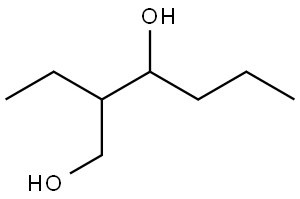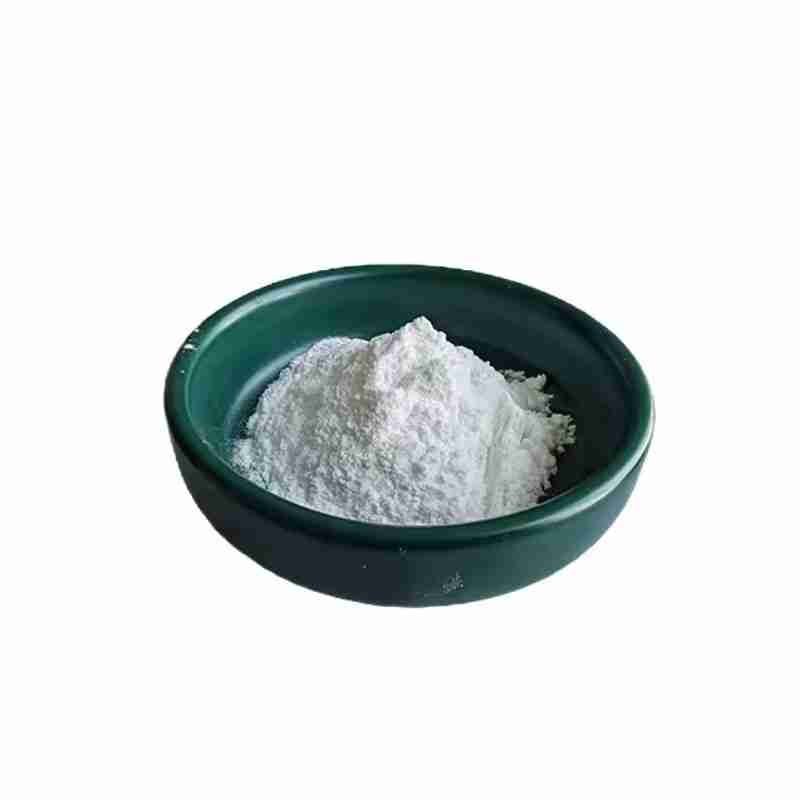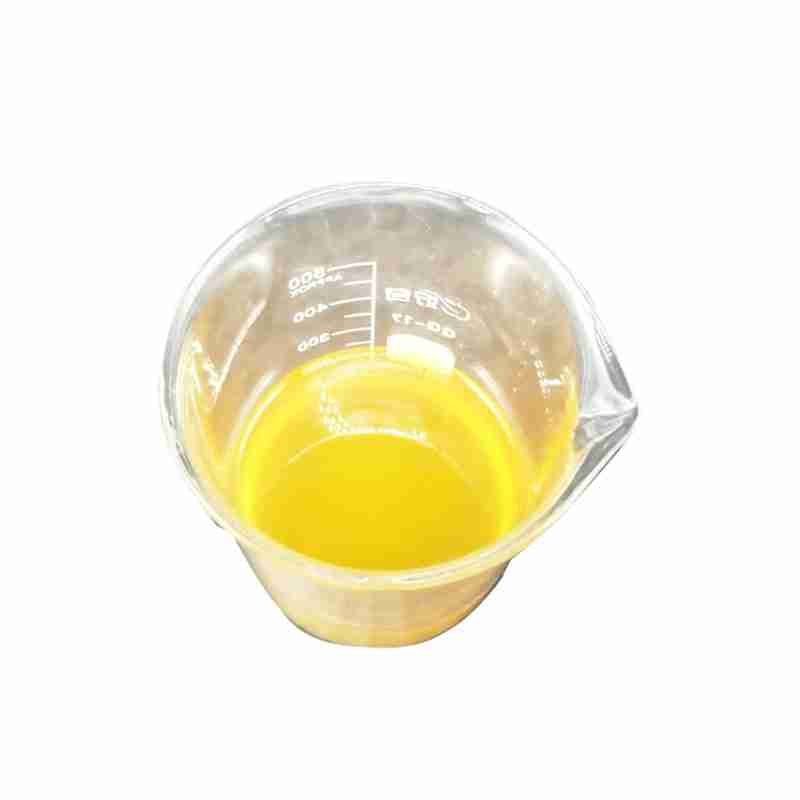2-Ethyl-1,3-hexanediol CAS #94-96-2
2-Ethyl-1,3-hexanediol is a colorless viscous liquid used as a plasticizer in the plastics and resin industry. It is also used in ink formulation to increase the permeability of ink on paper.
First, butyraldehyde is synthesized from propylene. Under the catalysis of alkali or acid, butyraldehyde self-condenses to generate 2-ethyl-3-hydroxyhexanal. This compound is very unstable and can be obtained by hydrogenation to obtain 2-ethyl-1,3-hexanediol.
发送询盘
2-Ethyl-1,3-hexanediol CAS #94-96-2
| 2-Ethyl-1,3-hexanediol Basic information |
| Product Name: | 2-Ethyl-1,3-hexanediol |
| Synonyms: | OCTYLENE GLYCOL(R);RUTGERS 612(R);2-ethyl-1,3-hexyleneglycol;2-Ethyl-2-propyl-1,3-propanediol;ETHOHEXADIOL(R);ETHOHEXADIOL(TM);2-Ethyl
hexanediol;2-ethyl-1,3-hexanediol,mixtureofisomers |
| CAS: | 94-96-2 |
| MF: | C8H18O2 |
| MW: | 146.23 |
| EINECS: | 202-377-9 |
| Product Categories: | Building Blocks;Chemical Synthesis;Organic Building Blocks;Oxygen Compounds;Polyols |
| Mol File: | 94-96-2.mol |
 |
|
| 2-Ethyl-1,3-hexanediol Chemical Properties |
| Melting point | -40 ??C (lit.) |
| Boiling point | 241-249 ??C (lit.) |
| density | 0.933 g/mL at 25 ??C (lit.) |
| vapor density | 5 (vs air) |
| vapor pressure | <0.01 hPa (20 ??C) |
| refractive index | n20/D?1.451(lit.) |
| Fp | 265???F |
| storage temp. | Store below +30??C. |
| solubility | 42g/l |
| form | Liquid |
| pka | 14.85??0.10(Predicted) |
| color | Clear |
| Odor | at 100.00?%. odorless |
| Water Solubility | 42 g/L (20 oC) |
| Sensitive | Hygroscopic |
| Merck | 14,3744 |
| BRN | 1735324 |
| Dielectric constant | 15.24 |
| LogP | 3.63 at 20?? |
| CAS DataBase Reference | 94-96-2(CAS DataBase Reference) |
| NIST Chemistry Reference | 1,3-Hexanediol, 2-ethyl-(94-96-2) |
| EPA Substance Registry System | 2-Ethyl-1,3-hexanediol (94-96-2) |
| Safety Information |
| Hazard Codes | Xi |
| Risk Statements | 41 |
| Safety Statements | 25-26-39-46 |
| WGK Germany | 1 |
| RTECS | MO2625000 |
| Autoignition Temperature | 340 ??C DIN 51794 |
| TSCA | Yes |
| HS Code | 29053980 |
| Hazardous Substances Data | 94-96-2(Hazardous Substances Data) |
| Toxicity | LD50 in male, female rats (ml/kg): 9.85, 4.92 orally (Ballantyne) |
- 2
- 2-diallylpent-4-en-1-amine
- 4
- 95-16-9
- Ammonium sulfamate
- Benzothiazole
- cas:67889-00-3ح2
- cas:83524-75-8 | pigment black 32
- cas:928836-00-4 | 2
- cas:932745-70-5 | 4
- Chemical Minerals
- Coconut diethanolamide
- Daily Chemicals
- discount
- for sale
- General pvc resin
- hexyl D-glucoside
- in stock
- Lauramidopropyl betaine
- LAURIC ACID MONOETHANOLAMIDE
- Petroleum Additives
- Plasticiser
- Ploymers
- price
- PVC
- quotation
- Raw Materal
- Remove term: Petroleum Additives Petroleum Additive
- SODIUM ETHYL 2-SULFOLAURATE
Related Products
Benzothiazoles are a class of chemical compounds characterized by a fused benzene and thiazole ring. They exhibit a broad spectrum of applications, particularly as antioxidants in rubber and plastic industries, enhancing product longevity and performance. Additionally, benzothiazoles serve as key intermediates in the synthesis of pharmaceuticals, contributing to the development of life-saving drugs. Recognized for their stability and reactivity, these compounds are integral to advancing material science and healthcare solutions.
Silicones are a family of synthetic polymers known for their versatility and stability. They are heat-resistant, non-toxic, and have excellent electrical insulation properties. Commonly used in various industries such as construction, automotive, aerospace, and personal care products, silicones offer a wide range of applications from sealants and adhesives to lubricants and medical devices. Their resistance to extreme temperatures and weathering makes them a preferred choice for many high-performance applications.
Chemical Name: Arabic gum
CAS No.: 9000-01-5
Appearance: powder
Chemical Name: Ashwagandha Extract
Synonyms: Withania somnifera, ext.; Withania Somnefera Extract
CAS: 90147-43-6
Appearance: Brown
1-Octanol, also known as Capryl alcohol or n-Octanol, is a clear, colorless liquid with a characteristic waxy odor. It is an alcohol with eight carbon atoms in its chain, making it a part of the aliphatic alcohol family. This compound is poorly soluble in water but is miscible with ethanol, diethyl ether, and chloroform . It has a melting point of approximately -15??C and a boiling point of around 196??C . 1-Octanol is used in the production of esters, plasticizers, and as a solvent or intermediate in the synthesis of various organic compounds. It also finds application in the fragrance industry as a fixative in perfumes and can be used in the formulation of flavor and scent compositions . It is important to note that 1-Octanol is flammable and should be handled with care, storing it away from sources of ignition and heat .
Chemical Name: o-Xylene
Synonyms: 1,2-Dimethylbenzene; ortho-xylene
CAS No.: 95-47-6
Molecular Formula: C8H10
Molecular Weight: 106.17
Chemical Name: Choline salicylate
CAS No.: 2016-36-6
Molecular Formula: C12H19NO4
Molecular Weight: 241.28
Appearance: Red-Brown Crystal
N,N-Dimethylaniline is an organic compound with amine and methyl groups attached to a benzene ring. It is a colorless liquid with a characteristic amine odor. This compound is primarily used as a chemical intermediate in the synthesis of dyes, pigments, and polymers. Its reactivity makes it a valuable building block in the production of various organic compounds, particularly in the pharmaceutical and chemical industries.
Chemical Name: Zinc citrate
Synonyms: Zinc citrate trihydrate
CAS No.: 546-46-3
Molecular Formula: C6H8O7Zn
Molecular Weight: 257.5
Appearance: White powder
Chemical Name: 3-Hydroxybutyric acid
CAS No.: 625-71-8
Molecular Formula: C4H8O3
Molecular Weight: 104.1
Appearance: White powder
Tetraacetylethylenediamine is a fully acetylated derivative of ethylenediamine, offering a high reactivity as an intermediate in organic synthesis. Its unique structure makes it a critical component in the production of specialty chemicals and pharmaceuticals, ensuring a wide range of applications in the chemical industry.
Terpene resin is a type of natural resin derived from terpenes, which are organic compounds found in various plants. It is known for its aromatic properties and is commonly used in the production of fragrances, flavorings, and as a component in adhesives and coatings within the chemical industry. Terpene resin offers a range of benefits, including enhancing the solubility of essential oils and providing a stable base for various applications. Its natural origin makes it a preferred choice for eco-friendly products.


















